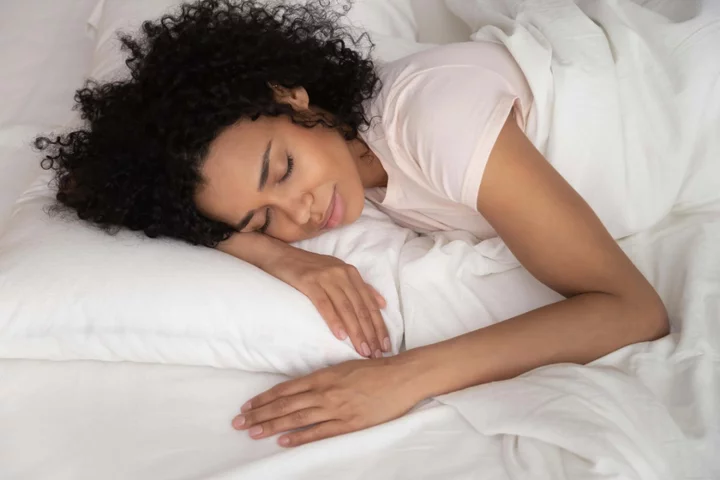
Regular napping could be good for brain health, research suggests
Regular daytime naps could be good for brain health, new research suggests. Daytime napping could slow the rate at which brains shrink as we age, the study led by researchers at UCL and the University of the Republic in Uruguay found. The researchers hope their findings into the health benefits of sleeping during the day will reduce any stigma that still exists around daytime napping. The study suggests the average difference in brain volume between people programmed to be habitual nappers and those who were not was equivalent to 2.6 to 6.5 years of ageing. Our findings suggest that, for some people, short daytime naps may be a part of the puzzle that could help preserve the health of the brain as we get older Dr Victoria Garfield, UCL Senior author Dr Victoria Garfield, MRC Unit for Lifelong Health & Ageing at UCL, said: “Our findings suggest that, for some people, short daytime naps may be a part of the puzzle that could help preserve the health of the brain as we get older.” The study, published in the journal Sleep Health, analysed data from people aged 40 to 69. Past research has suggested people who have had a short nap perform better in cognitive tests in the hours afterwards than those who did not nap. The new study looked at whether there was a causal relationship between daytime napping and brain health. Researchers looked at 97 snippets of DNA thought to determine people’s likelihood of habitual napping. They compared measures of brain health and cognition of people who are more genetically programmed to nap with people who did not have these changes in DNA, using data from 378,932 people from the UK Biobank study. They found that, overall, people predetermined to nap had a larger total brain volume. The genetic variants – DNA changes – influencing the likelihood of someone to nap were identified in an earlier study looking at data from 452,633 UK Biobank participants. But the researchers did not find a difference in how well those programmed to be habitual nappers performed on three other measures of brain health and cognitive function. Lead author and PhD candidate Valentina Paz, University of the Republic (Uruguay) and MRC Unit for Lifelong Health & Ageing at UCL, said: “This is the first study to attempt to untangle the causal relationship between habitual daytime napping and cognitive and structural brain outcomes. “By looking at genes set at birth, Mendelian randomisation avoids confounding factors occurring throughout life that may influence associations between napping and health outcomes. “Our study points to a causal link between habitual napping and larger total brain volume.” Garfield added: “I hope studies such as this one showing the health benefits of short naps can help to reduce any stigma that still exists around daytime napping.” Read More Charity boss speaks out over ‘traumatic’ encounter with royal aide Ukraine war’s heaviest fight rages in east - follow live Dramatic rise in the number of women freezing their eggs 9 glorious gardens to visit this summer How to keep flying insects out of your home
1970-01-01 08:00
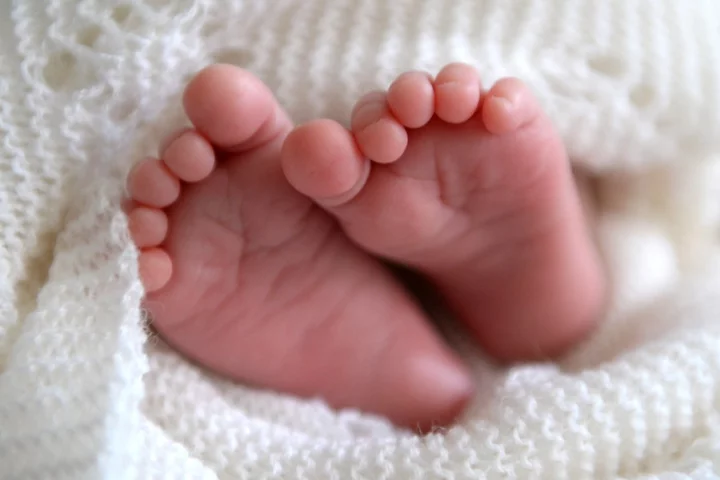
Dramatic rise in the number of women freezing their eggs
There has been a dramatic rise in the number of women freezing their eggs in the UK, while more single people are now opting for IVF, new figures show. A report from the Human Fertilisation and Embryology Authority (HEFA) found that more people than ever before are undergoing procedures, with egg and embryo freezing now the fastest growing fertility treatments in the UK. Egg freezing and storage increased from 2,576 cycles in 2019 to 4,215 in 2021 (a 64% rise), while embryo storage also rose. Some experts have said the Covid-19 pandemic had a big impact on the numbers of women wanting to freeze their eggs in the hope of preserving their fertility. Restrictions on socialising may have prompted some women to think more about their fertile window, and decide to try to increase their reproductive choices Sarah Norcross, Progress Educational Trust Sarah Norcross, director of the Progress Educational Trust, said of the latest data: “The dramatic rise in the number of egg freezing cycles could be linked to the pandemic. “Restrictions on socialising may have prompted some women to think more about their fertile window, and decide to try to increase their reproductive choices.” The HFEA data also shows there was a 10% rise in IVF and donor insemination cycles between 2019 and 2021 (around 7,000 more cycles). Meanwhile, the average age at which women have fertility treatment with IVF has risen – to 36. This compares to an average age of almost 31 for women who conceive naturally. The regulator’s report shows that patients in heterosexual relationships accounted for around 90% of all IVF patients in 2021. Meanwhile, the number of IVF patients in female same-sex relationships increased from 1,649 in 2019 to 2,201 in 2021 (a 33% rise) and single parents rose from 2,001 in 2019 to 2,888 in 2021 (a 44% rise). This means that single patients and patients in female same-sex relationships had the biggest increase in IVF use from 2019 to 2021. When it comes to success in getting pregnant using own eggs, the average overall IVF pregnancy rate using fresh embryos increased from 10% per embryo transferred in 1991 to 29% in 2021. Patients aged 18 to 34 had the highest pregnancy rate per embryo transferred at 41% in 2021. Meanwhile, pregnancy rates per embryo transferred increased from 8% in 1991 to 33% for patients aged 35 to 37, and was 25% for patients aged 38 to 39 in 2021. For patients aged 40 to 42, the pregnancy rate per embryo transferred increased from 6% in 1991 to 16% in 2021. Our report shows that the average age of IVF patients has increased to 36, around five years older than mothers who get pregnant naturally and these aftershocks could mean that the average age of an IVF patient continues to rise Julia Chain, HFEA For patients aged 43 to 50, the pregnancy rate per embryo transferred increased from 1% in 1991 to 6% in 2021. Live birth rates per embryo transferred have increased from 7% in 1991 to 25% in 2021 for patients aged 35 to 37 and from 6% in 1991 to 17% in 2021 for patients aged 38 to 39. For those aged 40 to 42, the live birth rate per embryo stands at 10%, but plummets for women aged 43 and over. Meanwhile, the average IVF pregnancy rate using frozen embryo transfers has increased from around 7% in the 1990s to 36% in 2021. The average IVF birth rate using frozen embryo transfers also increased from around 6% in the 1990s to 27% in 2021. Julia Chain, chairwoman of the HFEA, said: “Overall, the new HFEA report paints a promising picture. It shows treatment numbers are back at pre-pandemic levels and thanks to improved clinical and laboratory practice, over time pregnancy rates are increasing. “Despite the pandemic being declared officially over, the aftershocks are still being felt as delays across other areas of healthcare prevent some patients accessing fertility services. “Our report shows that the average age of IVF patients has increased to 36, around five years older than mothers who get pregnant naturally and these aftershocks could mean that the average age of an IVF patient continues to rise. “Although pregnancy rates have increased, the likelihood of success decreases with age. “For some patients, this may mean they never get the baby they hoped for and that’s heartbreaking.” More patients than ever before are paying privately for IVF. The number of IVF cycles funded by the NHS continued to vary across the UK with an overall 16% decrease to 20,000 cycles in 2021 from around 24,000 in 2019.
1970-01-01 08:00
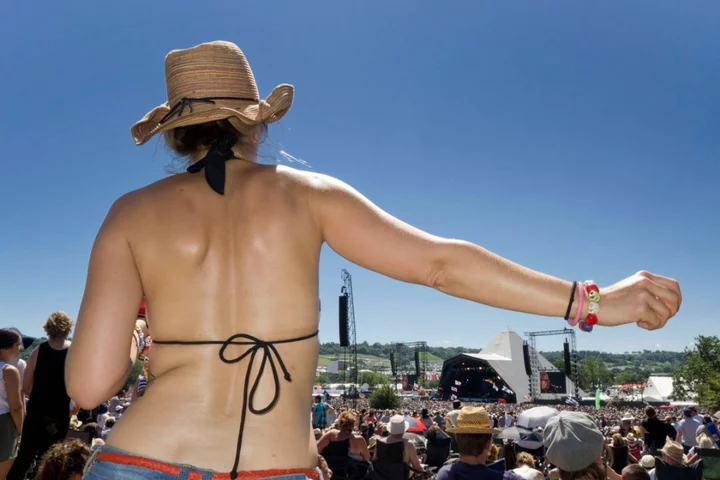
6 hacks for handling the heatwave at a festival
With the heatwave stretching on this summer, festival-goers may be worried about handling the hot temperatures. The medical team at the Isle of Wight Festival said they saw fewer heat-related issues than expected, but there has still been a 15% rise in incidents since last year. With Glastonbury temperatures predicted to fall between 21 and 25 degrees, how can you make sure you stay safe? 1. Find shade – anywhere on the site When you see photos and videos of festival sites, it can look pretty exposed to the elements. “At festivals, seek shade in festival tents or near stages, or by going to bars… Even take a gazebo to go with your tent [if the festival allows],” says associate medical director of St John Ambulance, David Monk. When out in the field, take an umbrella or parasol if you are worried, Monk explains. And also, consider “wearing light layers and a cap”, he says. “Perhaps take a wet cloth to pop on the back of your neck, or wet the cap and wear it to cool you.” 2. Put sun cream everywhere “Make sure you wear a good head covering, at least SPF 30, and reapply regularly, so take it into the festival with you. When you get sweaty, it will need reapplying,” Monk explains. If you are dressing up in wild clothing, “apply sun cream before putting it on and reapply it, and make sure you take something to wear when it starts getting cooler”, he explains. “Put sun cream under make-up and glitter, and look at a sun cream spray for your scalp” – especially important if you don’t want to wear a hat. 3. Know what to look out for Knowing the signs of heatstroke and severe burns is vital. The main risks are sunburn, heatstroke and heat exhaustion. “Heat exhaustion is something you can self-treat by drinking lots of water or weak squash, and eating salty foods. If you think you have heatstroke, however, seek help from the medical teams,” Monk says. Signs include not sweating despite being hot, and a reduced level of consciousness, he adds. “If you get burnt, think how bad it is. If it blisters, you feel unwell or are shivering, seek help from the festival medical teams.” They should be fairly easy to find and signposted – ask around if you can’t see any. However, if it is less severe, just do lots of moisturising and rehydrating, he suggests. 4. Drink water and know how hydrated you are “Drink alcohol in moderation, and drink water alongside it. When you go to the loo, check how dark your urine is,” Monk suggests. This isn’t always possible in festival toilets, but you might detect darker and more dehydrated urine from its smell. 5. Pack the electrolytes When you sweat, you lose a lot of electrolytes, like salt. “Take an electrolyte drink with you – things like sports drinks, or Dioralyte, to replace whatever you lose,” says Monk. “Make sure you’re eating things with salt in, and carbohydrates, to give you energy.” 6. Keep an eye on drink and drugs “If people are going to take drugs, make sure those around you know what you have taken, in case they need to tell someone if there is a problem. Drugs and alcohol reduce your body’s ability to respond to the heat,” says Monk. Read More Charity boss speaks out over ‘traumatic’ encounter with royal aide Ukraine war’s heaviest fight rages in east - follow live Regular daytime naps could be good for the brain, study shows Meghan ‘set to sign’ Dior deal: 4 times she’s worn the brand Designer JW Anderson wears Irish rugby top on the runway
1970-01-01 08:00
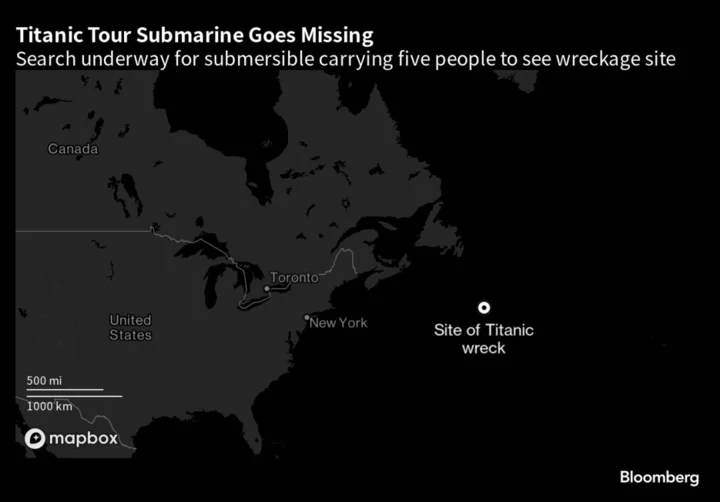
World-Record Breaker, Business Leaders Missing on Titanic Tour
Five people are on board a submersible vessel that has gone missing in the North Atlantic during an
1970-01-01 08:00

Missing Glastonbury? Here’s how to have a festival feast at home
With Glastonbury kicking off today, it’s safe to say that festival season is officially in full swing. Didn’t manage to get tickets this year? Not to worry! From food to tunes, here’s everything you need to recreate the ultimate Glasto experience at home… Dress to impress It’s time to whip out the flower crowns and get decked out in your best festival gear – just because you’re at home, doesn’t mean you can’t dress to impress. Think fancy dress, glitter, fringing… anything goes! If you’re looking for inspo, try searching “Glastonbury festival fashion” on Pinterest and scroll until your heart’s content. Crank the tunes up What’s a festival without music? If you have a projector, you could get out in the garden and stream the official Glasto set, or simply pop the Spotify Glastonbury 2023 playlist on and have a boogie. Even better, if you have musically gifted friends in your group, get them to get their instruments out and put on a headline show of their own. Enjoy a festival feast Of course, music is important, but food is also an essential part of the festival vibe. Get inspired by Glastonbury’s food stalls with these recipes… Halloumi, chip and tzatziki pitta with salad Serves: 2 Ingredients: 1 garlic clove 1 tsp dried oregano 2 wholemeal pittas 1 midi cucumber 50g baby leaf salad 200g halloumi 2 white potatoes 80g natural yoghurt 15ml white wine vinegar 5g mint 1 red onion Method: 1. Preheat the oven to 220C/200C (fan)/gas 7. Boil half a kettle. Peel and finely slice the red onion. Add the sliced red onion to a bowl, cover with boiled water and set aside for later. 2. Cut the potatoes (skins on) into thin chips, then add them to a baking tray with the dried oregano, a drizzle of vegetable oil and a pinch of salt. Give everything a good mix up and put the tray in the oven for 25-30 min or until crisp. Meanwhile, peel and finely chop (or grate) the garlic. 3. Strip the mint leaves from their stems and chop them roughly, discard the stems. Grate half the cucumber and slice the rest into batons. Add the chopped garlic, chopped mint and grated cucumber to a bowl with the natural yoghurt and mix it all together – this is your tzatziki. 4. Drain the sliced red onion in a sieve and rinse under cold water. Return to the bowl and add the white wine vinegar with a generous pinch of sugar. Stir to combine and set aside to pickle – these are your quick-pickled onions. 5. Slice the halloumi widthways into 4 equal-sized strips. Then slice each strip in half so you are left with 8 halloumi sticks. Heat a large, wide-based pan (preferably non-stick) with a drizzle of olive oil over a medium-high heat. Once hot, add the halloumi sticks and cook for 2-3 min on each side or until golden. 6. Once the chips are almost done, add the pittas to the tray. Return the tray to the oven and cook for 2-3 min or until warmed through. 7. Wash the baby leaf salad, then pat it dry with kitchen paper. Fill the warmed pittas with the chips, golden halloumi sticks, cucumber batons and a handful of baby leaf salad. Top with the tzatziki and quick-pickled onions then wrap in the tin foil to hold it all together – these are your halloumi, chip and tzatziki pittas. Serve the halloumi, chip & tzatziki pittas with any remaining tzatziki and baby leaf salad to the side. Fluffy bao buns Makes: 12 Ingredients: 7g fast-action yeast 2 tbsp caster sugar 340g plain flour ½ tsp baking powder ½ tsp bicarbonate of soda Bamboo steamer or bain-marie Method: 1. Combine the yeast and sugar in a bowl with 150ml of warm water. Mix and set aside for 10-15 mins. Sift in the flour, baking powder, bicarb and a pinch of salt, then combine to form a dough ball. 2. Knead onto a floured surface for 5 minutes, until the dough is perfectly smooth. Place it in a greased bowl, cover with a towel and leave to rise in a warm place for 1 hour. 3. Place twelve 1-cm squares of baking paper on a large baking tray. Roll your dough until it’s ½cm thick and cut out twelve circles with a 7cm round cookie cutter. 4. Place each circle on a square of paper and brush with veg oil (so they don’t stick when folded). Fold each one in half, cover the tray with cling film and leave in a warm place for another hour to puff up. 5. Once risen, steam in batches for 9-11 minutes until cooked through. Add your chosen filling and serve warm. DIY double cheeseburger Serves: 2 Ingredients: 2 sesame seed buns 400g minced beef 1 tsp vegetable oil 4 slices of cheese ¼ iceberg lettuce (finely shredded) 2 gherkins (sliced) ½ white onion (finely diced) For the burger sauce: 2 tbsp mayonnaise 2 tbsp ketchup 2 tsp yellow Mustard 1 tsp smoked paprika 1 tbsp pickle juice ½ tsp cayenne pepper Method: 1. Generously season your beef mince with salt and pepper in a bowl and mix until sticky to the touch. Divide the mixture into 4 equal portions, shape them into patties, and pop them into the fridge on a parchment-lined tray. 2. Whip up your burger sauce by combining all your ingredients in a bowl and giving it a good mix. 3. Slice the burger buns into 3 and toast them in a dry frying pan until golden brown. 4. Heat a frying pan on medium heat with a splash of vegetable oil and fry your patties for 5-7 minutes. Top tip: use a spatula or burger weight to keep your patties flat while cooking. 5. Add a slice of cheese to each patty and turn off the heat when the cheese starts to melt. 6. Build your Gousto Burgers with shredded lettuce, a cheesy patty and a layer of sliced gherkin, diced onions and burger sauce. Pop in the middle of your burger bun and repeat. Don’t forget the bar Enjoy some delicious summery cocktails with these recipes. Mojito Ingredients: Juice of 1 lime 1 tsp sugar Small handful of mint leaves, plus more to serve 60ml white rum Soda water, to taste Method: 1. Slap your mint leaves between your palms once, then add them to a small jug. 2. Gently muddle the lime juice, sugar and mint leaves in a small jug, crushing the mint as you go. The end of a rolling pin works well for this. 3. Pour into a tall glass and add a handful of ice. 4. Pour in your rum and give it another stir with a spoon. 5. Top up with soda water, garnish with mint and serve. Bellini Ingredients: 500 ml peach purée or peach nectar 1 bottle of prosecco Method: 1. Fill your glasses with 1/3 peach purée. 2. Top them off prosecco, and serve. Gousto offers over 250 recipes from expert chefs to choose from each month, from £2.99 per portion. Visit gousto.co.uk for more information.
1970-01-01 08:00
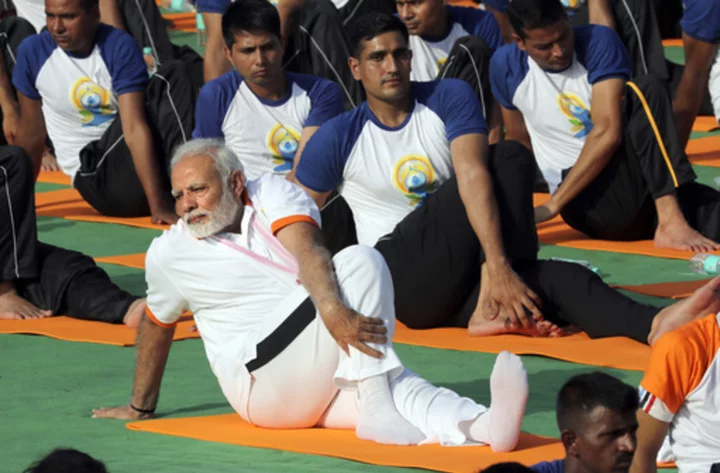
Living la vida yoga: India's Modi will bend leaders into shape on International Yoga Day
When Indian Prime Minister Narendra Modi leads foreign dignitaries and bureaucrats in a session for International Yoga Day on Wednesday at the United Nations’ Secretariat in New York, millions of Indians will take note
1970-01-01 08:00
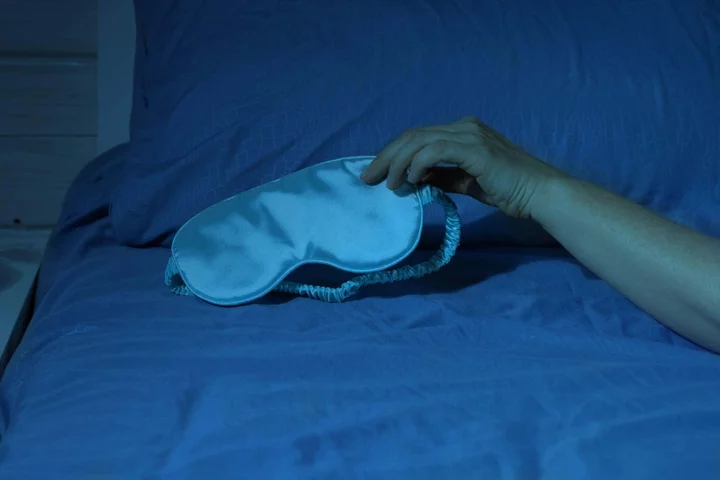
Regular daytime naps could be good for the brain, study shows
Regular daytime naps could be good for brain health, new research suggests. Daytime napping could slow the rate at which brains shrink as we age, the study led by researchers at UCL and the University of the Republic in Uruguay found. The researchers hope their findings into the health benefits of sleeping during the day will reduce any stigma that still exists around daytime napping. The study suggests the average difference in brain volume between people programmed to be habitual nappers and those who were not was equivalent to 2.6 to 6.5 years of ageing. Our findings suggest that, for some people, short daytime naps may be a part of the puzzle that could help preserve the health of the brain as we get older Dr Victoria Garfield, UCL Senior author Dr Victoria Garfield, MRC Unit for Lifelong Health & Ageing at UCL, said: “Our findings suggest that, for some people, short daytime naps may be a part of the puzzle that could help preserve the health of the brain as we get older.” The study, published in the journal Sleep Health, analysed data from people aged 40 to 69. Past research has suggested people who have had a short nap perform better in cognitive tests in the hours afterwards than those who did not nap. The new study looked at whether there was a causal relationship between daytime napping and brain health. Researchers looked at 97 snippets of DNA thought to determine people’s likelihood of habitual napping. They compared measures of brain health and cognition of people who are more genetically programmed to nap with people who did not have these changes in DNA, using data from 378,932 people from the UK Biobank study. They found that, overall, people predetermined to nap had a larger total brain volume. The genetic variants – DNA changes – influencing the likelihood of someone to nap were identified in an earlier study looking at data from 452,633 UK Biobank participants. But the researchers did not find a difference in how well those programmed to be habitual nappers performed on three other measures of brain health and cognitive function. Lead author and PhD candidate Valentina Paz, University of the Republic (Uruguay) and MRC Unit for Lifelong Health and Ageing at UCL, said: “This is the first study to attempt to untangle the causal relationship between habitual daytime napping and cognitive and structural brain outcomes. “By looking at genes set at birth, Mendelian randomisation avoids confounding factors occurring throughout life that may influence associations between napping and health outcomes. “Our study points to a causal link between habitual napping and larger total brain volume.” Dr Garfield added: “I hope studies such as this one showing the health benefits of short naps can help to reduce any stigma that still exists around daytime napping.” Read More Dramatic rise in the number of women freezing their eggs Paramedics who found ‘poisoned’ couple dead in Mexico hotel room also fell ill Bruce Willis’ family honours him with first Father’s Day tributes since announcing his dementia diagnosis Richard Ford on Frank Bascombe, getting older and literary feuds: ‘At my age I can’t get into fistfights’ Families’ ‘disappointment’ as Croydon tram disaster driver cleared
1970-01-01 08:00
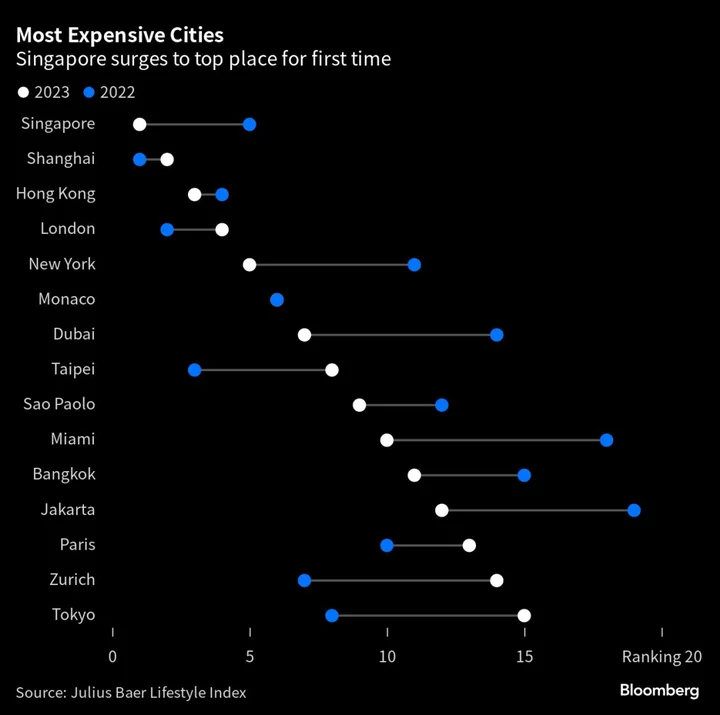
These Are World’s Most Expensive Cities For High-Class Living
Singapore surged to top the rankings as the most expensive city in the world for luxury living for
1970-01-01 08:00
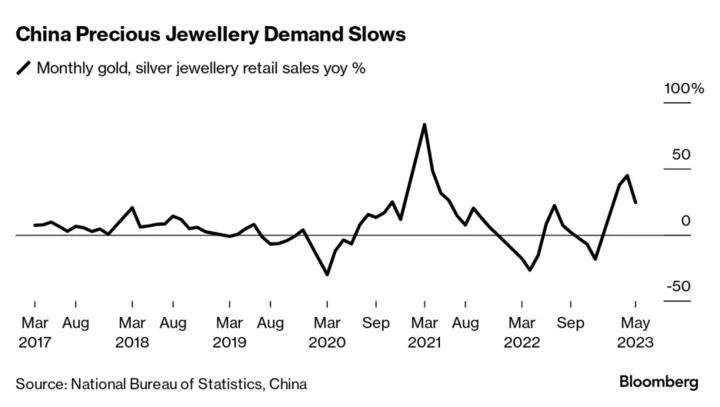
Surge in China’s Demand for Gold Is Slowing as Economy Stumbles
The jitters affecting the world’s second-biggest economy are starting to feed through into China’s gold market. A surge
1970-01-01 08:00

New Planes and China Combine to Crimp Oil’s Key Demand Driver
This year’s much-anticipated rebound in air travel is sputtering, with profound implications for the global oil market. In
1970-01-01 08:00
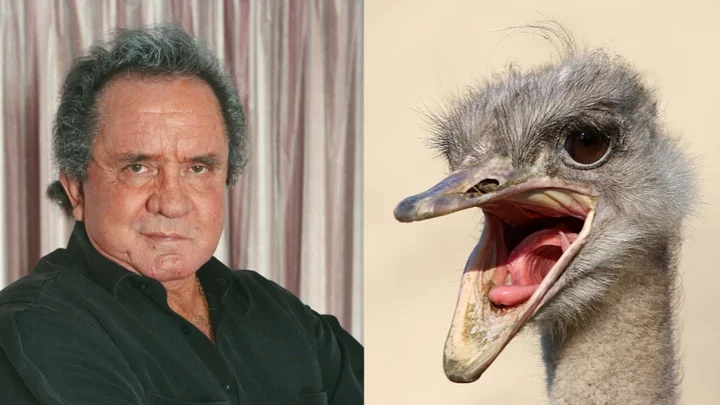
Angry Bird: When Waldo the Ostrich Tried to Kill Johnny Cash
An ornery bird once tried to disembowel the Man in Black.
1970-01-01 08:00

Louis Tomlinson’s sister Phoebe, 19, announces pregnancy on social media
Louis Tomlinson’s little sister, Phoebe Tomlinson, has announced that she’s pregnant with her first child. The 19-year-old shared a video on Instagram on Monday to reveal that she’s expecting a child with her boyfriend, Jack Varley. The black-and-white footage, which was set to Ellie Goulding’s “How Long Will I Love You,” began with Phoebe looking at her positive pregnancy test in shock and excitement before showing the test to her partner. Phoebe’s video continued with her documenting the happy reactions from her twin sister, Daisy, and her father, Mark Tomlinson, to the baby news. The influencer went on to share a picture of an ultrasound, a onesie that read: “Coming soon baby Varley,” and a teddy bear. After sharing a clip of herself cradling her baby bump, she included a video taken by her sister, Lottie Tomlinson, as Lottie and her son, Lucky, joined the mother-to-be for an ultrasound appointment. The video ended with a shot of two onesies. In the caption, Phoebe hinted at her baby’s due date, writing: “Our little miracle, joining us this winter.” While the One Direction singer has not yet commented on his sister’s Instagram video, some of her other family members did. “Can’t wait to meet you baby,” Lottie wrote, while Daisy commented red hearts and multiple emojis of a face holding back tears. Many fans and friends of the UK influencer also took to the comments to share their well-wishes and congratulatory messages. “Oh my god I’m crying!! Congratulations,” YouTuber Anastasia Kingsnorth wrote. “Aw congrats!!! Most amazing journey coming up!!” another one of Phoebe’s followers wrote, while a third added: “Congratulations beautiful girl! You were made for this.” Other fans said they were eager to see Louis’ response to the baby news. “Just imagine how happy Lou was with the news, congratulations,” one wrote, while another added: “We’re very sure Uncle Louis is so excited to meet you baby!!” Phoebe also shared two photos of herself looking at her baby bump on TikTok to announce the news. Louis, who has his stepfather’s last name, has also been vocal about being involved in his siblings’ lives after their mother’s death in 2016. During an interview with The Telegraph in 2020, he called himself “a kind of second parent” to Daisy and Phoebe. “Without being too soppy, I like looking after people, it’s cool,” he explained. At the time, he confessed that he was using some of his money to help pay for his sisters’ private school education. Read More Niall Horan says he was afraid to go out after being chased by One Direction fans A One Direction fan claimed she had a brain tumour. Five years after her death, we still need answers From Ed Sheeran to Dua Lipa: the richest musicians and celebrities under the age of 35 Bruce Willis’ family shares first Father’s Day posts since announcing his dementia Adele opens up about fungal skin infection after ‘sitting in my own sweat’ Gavin Rossdale says he and Gwen Stefani have ‘opposing views’ as parents
1970-01-01 08:00
